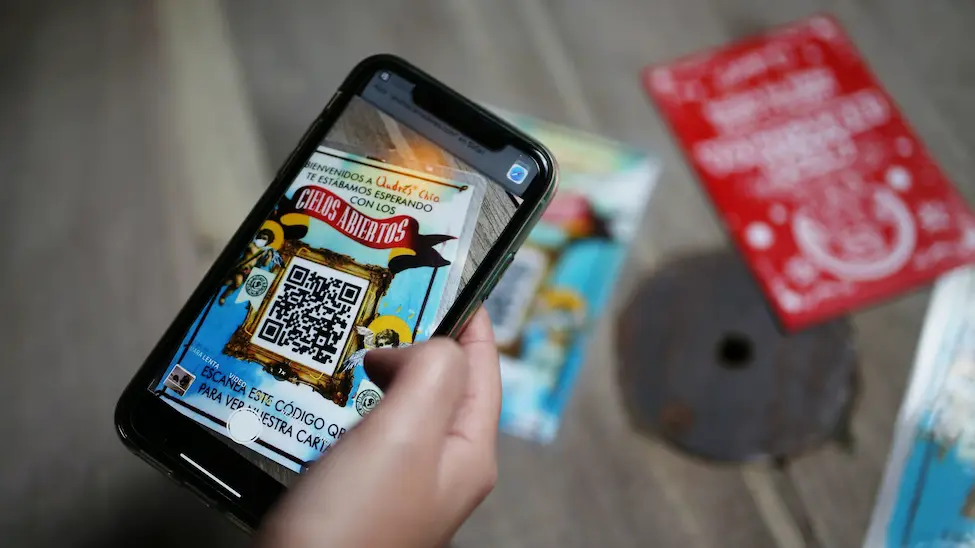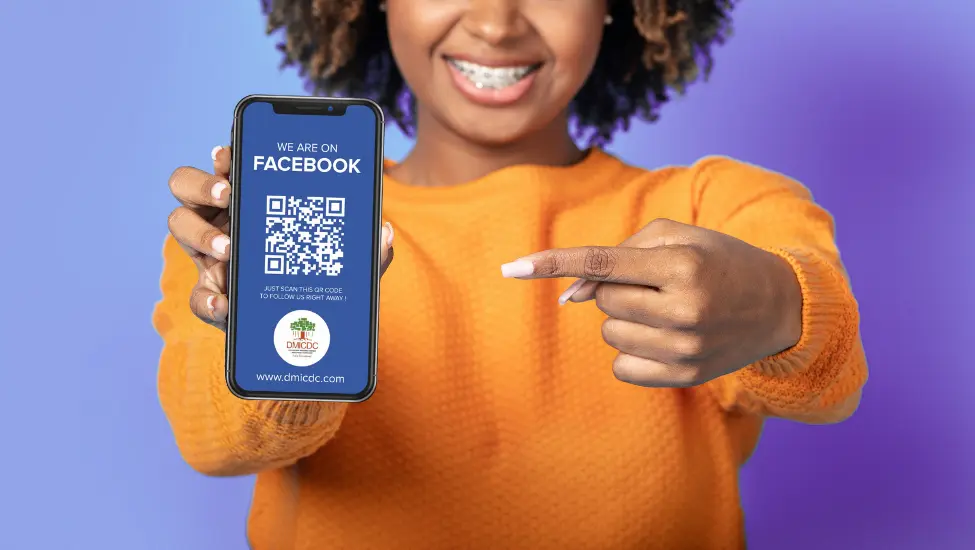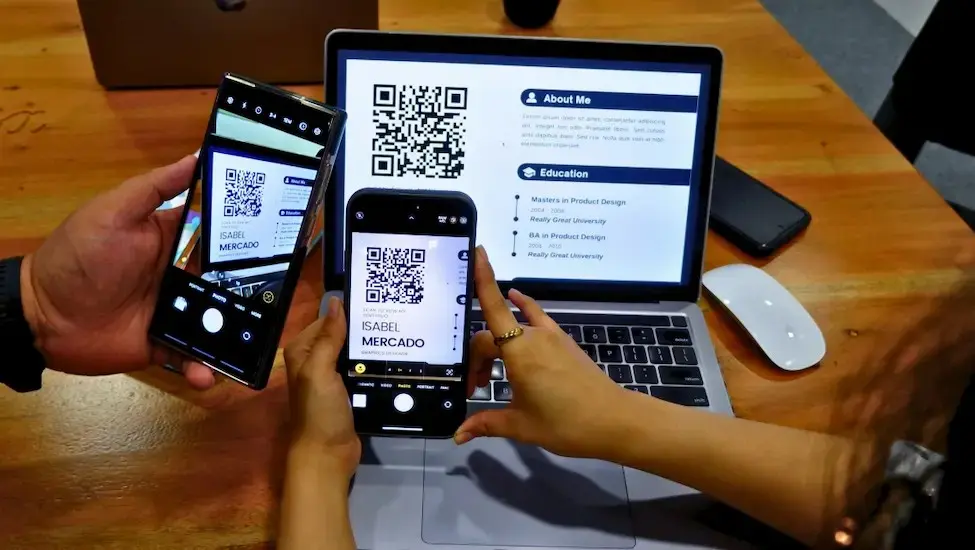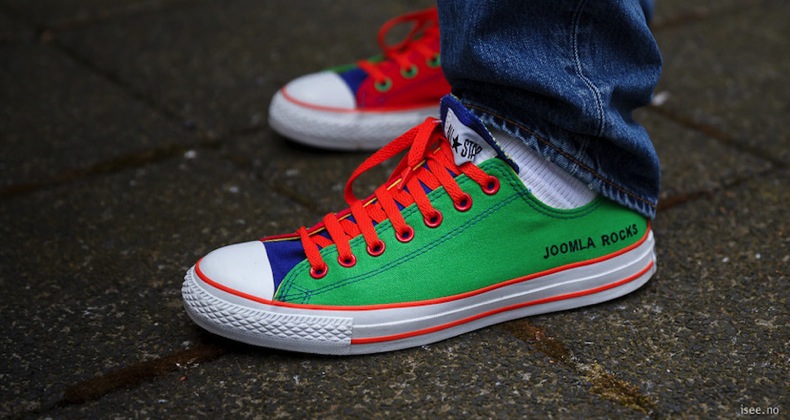Let’s start with a confession: I have nothing against QR codes. When used properly, they’re brilliant. A tiny black-and-white bridge between the physical and digital worlds.
But like most bits of tech that escape their intended habitat, they often end up used in the most ridiculous ways imaginable. So before we plaster another square of dots onto every available surface, let’s talk about what QR codes actually are, where they shine, and where they just make you look a bit daft.
What Exactly Is a QR Code?
QR stands for Quick Response. It’s a two-dimensional barcode invented in Japan in the mid-1990s by Denso Wave (part of Toyota). The idea was to track car parts in a factor, not to make your social media campaign look “techy”.
Unlike a normal barcode, which stores data in one direction, a QR code stores it in two, horizontally and vertically, so it can hold a lot more information. Point your phone’s camera at one, and it decodes a URL, a bit of text, a contact card, or even your Wi-Fi credentials.
In short: it’s a shortcut from something physical to something digital.
Where QR Codes Are Brilliant

Used in their natural habitat, QR codes are one of the simplest, smartest bits of interface design we’ve got.
- From Print to Web
Perfect on posters, flyers, packaging, or museum signs. Anywhere you want to take someone from real-world object to web page. Typing www.very-long-and-ugly-url.com is a pain. Scanning is instant. - On Products or Equipment
Ever stood in front of a machine wondering, “Where’s the manual?” Stick a QR code on it linking directly to instructions. That’s contextual design done right. - Menus and Tickets
Cafés, events, and transport hubs all use QR codes effectively to show menus, timetables, and tickets. It saves printing, and it’s practical. - To Kick Off an Interaction
A QR code can connect you to Wi-Fi, download an app, or start a WhatsApp chat. It’s like a button printed on paper.
The rule of thumb: if someone is holding a physical thing, a QR code can be helpful. If they’re already online, it’s probably not.
Where QR Codes Are Utterly Stupid

Picture this: you’re scrolling through Facebook on your phone and see a post that says, “Scan this QR code to visit our website!”
You’re already on your phone. The only device you have that can scan a QR code is the one you’re using to look at the QR code.
It’s like handing someone a telescope and telling them to look at the telescope through the telescope.
Here’s why this doesn’t work:
-
Single-device paradox – you can’t scan a QR code on the same screen you’re viewing.
-
Clickable links exist – if you’re posting online, use a link. One tap, done.
-
No offline advantage – QR codes are for connecting the physical world to the digital one, not the other way round.
-
Frustration factor – people just scroll past rather than try to make your impossible QR work.
So, yes: QR codes in social media posts are not innovative, they’re just… embarrassing.
The One Exception That Proves the Rule

Now, let’s be fair — there’s one very good reason to show a QR code on a screen: when you’re transferring information between two different devices.
Two-Factor Authentication (2FA)
When you’re setting up an app like Google Authenticator, Authy, or Microsoft Authenticator, you scan a QR code displayed on your computer screen with your phone. This securely transfers a secret key or session token between devices without you having to copy long strings of nonsense.
That’s not stupid; that’s brilliant. It’s a perfect use of the technology: one device displays, the other scans. Simple, safe, efficient.
So the rule stands:
QR codes are great when bridging between devices or from offline to online. They’re useless when you’re already in the same place.
The Good, The Bad, and The “Why Did You Even Bother?”
Good Use
-
Posters or billboards linking to event info
-
Product packaging that opens an instruction video
-
Museum exhibits leading to audio guides
-
Café tables with scannable menus
-
Desktop login screens for authentication apps
Bad Use
-
Facebook or Instagram posts with embedded QR codes
-
YouTube videos flashing up a QR for two seconds
-
Email newsletters that say “scan this” instead of “click this”
-
TV adverts where the code is too small to scan
-
Anywhere the user already has a single device in hand
How to Use QR Codes Without Looking Silly
-
Think context first. Physical space or digital space?
-
If they’re already online, use a link.
-
If they’re offline, use a QR code.
-
Test it yourself. Different lighting, angles, distances — if you can’t scan it, no one can.
-
Explain why. Add a short caption: “Scan for full guide,” not just a lonely square.
-
Don’t use them as decoration. They’re a tool, not a design flourish.
The Takeaway
QR codes aren’t the enemy. They’re just misunderstood.
Used correctly, they make life easier. Used carelessly, they make you look like you don’t know how phones work.
So next time you’re tempted to drop a QR code into a Facebook post, stop and ask yourself:
“Would I need a second phone to use this?”
If the answer is yes… it’s not clever. It’s comedy.
Technology should solve problems, not create new ones.






